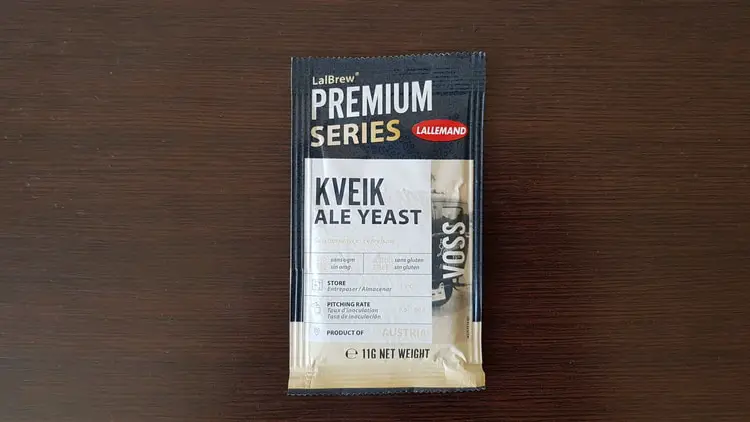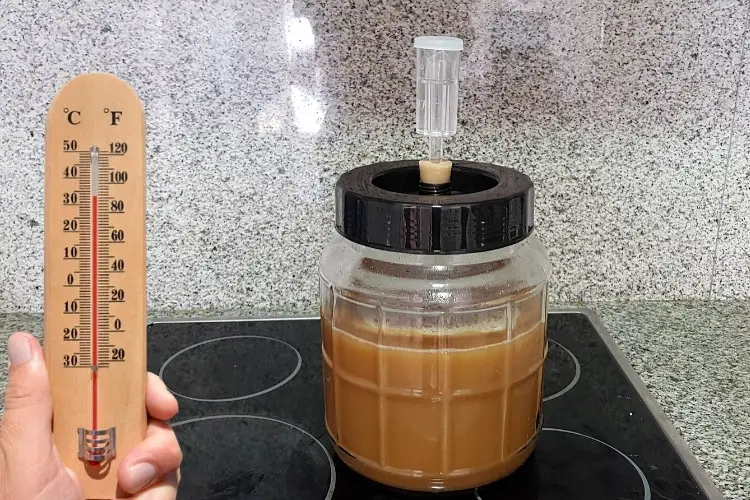Brewing is a temperature-sensitive process. Ales require 58-68˚ F (14-20° C). Lagers need 53 down to 40˚ F (4-11° C) to properly ferment and condition.
Living in the middle latitudes, between the tropics, yet temperate with four distinct seasons, summer temperature becomes a concern. You have many options. You need not give up your homebrewing passion during the summer months, or the endless summer of the sub-tropics.
Brewing beer in hot weather is possible but the environment must remain stable for ales to ferment within the set temperatures (58 – 68˚ F). It may require extra equipment, like a fermentation fridge or a cooling jacket, and alternate yeast strains, like Kveik or Belgian yeast.
Most home brewers start with ale brewing, and well they should. They are simpler, faster, and have dynamic flavor profiles. Ales can be brewed, packaged, and enjoyed in as little as 3 weeks, even two if your ambitions push the envelope.
When summer comes, beware, as they may fly off the temperature scale and ruin your best efforts. Here is a safe path forward.
Brewing Ales in Hot Summer
Ales are the darling of modern craft brewing.
The vast majority of American Craft Breweries, or anywhere outside of Northern or Eastern Europe will be Ale breweries.
Ale yeast is hardy, producing dozens of unique flavors.
This is a pure strain of yeast, and there are myriad proprietary flavors available.
It does have strict temperature ranges.
Stray north of these, above 70° F (21° C), there are grave risks of FUBAR – fracked up beyond all recognition.
Optimum ale temperatures are from 58-68˚ F (14-20° C), 72˚F (22° C) at the uppermost limit.
Belgian Yeasts are an exception, existing in a brewing realm of their own and I have fermented them north of 78˚ F (25° C).
Ale Fermentation in Brief
Ale ferments vigorously and is top-fermented.
Yeast collects at the top of the beer in high Krausen (croyzǝn), where during the primary fermentation the healthiest yeast floats and dives for the sugar.
Fermentation, primary and secondary is done in 5-8 days, the yeast flocculates (settles to the bottom) and the beer is fully attenuated.
Along with yeast choices, these days there are dozens of Ale styles available.
As the number of US craft breweries has risen to above 7,000, new styles are explored, instigated, and hybridized.
Ales are characteristically, hoppy, an amber or dark color, strong and robust.
They can be sweeter or dry, and often have a fruity bouquet due to esters or phenols (compounds created during fermentation that in low amounts enhance the flavor).
Too Hot to Brew? What Options Are There?
The practical path to summer brewing is an investment in equipment.
It can be modest or bold, depending on your circumstances.
Here are some options.
1. Fermentation Fridge
If you have a garage, basement, or man-cave, then outfit that puppy with an extra fridge.
It can double as a keg cooler depending on the size. 1 – 2 carboys and 1 – 2 soda kegs of beer should fit nicely.
You will have to retrofit with some sturdy shelving, as they were not made to carry the weight of 20 gallons of beer.
Most importantly, you will need an exterior thermostat, such as an Inkbird.
They will override the interior thermostat.
Set the internal thermostat to the lowest setting and the external controller will enable you to adjust your temperature at will.
You need only fish the thermo-couple in through the door gasket, or you could drill a small hole.
Sounds tricky, but really not.
No products found.
2. Other Temperature Control Devices
There are low-tech devices you can use.
There are insulated fermenter jackets wherein you keep rotating synthetic ice packs into the packing, or simply frozen bottles of water.
You can check the following insulated fermenter chamber on Amazon.
That’s the one Dorian is using in the summer months in Barcelona and he’s very about it. Check out the review he wrote of this Cool Brewing bag. He did some reports and graphs, very cool.
No products found.
Lastly, you can build or buy a fermentation chamber! (lightning strikes, wolves howl)
These can be as simple as an insulated box, a retrofitted fridge or a high tech, temperature-controlled compartment, specifically made for beer brewing.
Old walk-in cooler panels, thick styrofoam coated in aluminium, or old fridges can be cannibalized and transformed to serve your needs.
A pre-fab high tech “chamber” is a push-button option.
Do research and weigh the trade-offs of time and money invested.
3. Managing Unexpected Temperature Spikes
If, however, your ale spikes in temperature, whether from the weather, faulty equipment, or improper pitching temperature, trouble ahead, trouble behind, and you know that notion just crossed my mind.
Here are some hot weather scenarios and ways out of a pickle, a mess, imminent disaster!
Kidding, relax and nearly anything may be overcome.
I’ve said many times and will echo endlessly, accidents happen in brewing.
It’s how you respond and learn from them is what makes you better.
| Environmental condition | Beer Status | Adjustments |
| 1. Temp spike to 72-78˚ F (22-25° C) |
|
|
| 2. Temp returns to 65-70˚ F (18-21° C) |
|
|
| 3. Turn the AC off during the day or have none: Inconsistent ambient temperatures |
|
|
| 4. Impossible to keep the house below 72˚ F (22° C), even at night, or when you are actively at home |
|
|
4. Tolerant Ale Yeasts in Summer
As covered in the above table, Belgian yeasts are a brewer’s boon companion during the summer months.
In a normal course of fermentation, they can tolerate temps of 68-76˚ F (20-24° C) and be at their best.
They are maltier and sweeter than most ales and also average 7 – 9 % alcohol.
If this is not your preference, you may still follow your pale ale recipe, it will just have an alternate yeast flavor profile.
Changing yeasts and adapting to summer brewing is achievable, just plan for it.
If you have that small closet, laundry room, or utility room that is cooler, seal it off and turn it into your meat locker.
Perhaps you can pick up a used window-unit AC and keep it cool.
Basements can be excellent fermentation cellars as they naturally keep a cooler ambient temperature.
Be aware there will be more moisture and mildew. Keep it clean.
Brewing to your Environment
Summer heat may be hard to control, so regulate the beer temperature through location, air vents, ice, and the needs of the yeast.

There is a newer dried yeast ironically from Scandinavia called Kveik.
It ferments well from 72-95˚ F (22-35° C).
Too good to be true?
Perhaps, yet has proven to be a game changer in warm weather brewing.
Kveik will go to town and won’t stop.
Mash high, at 155-158˚ F (68-70° C).
The beer will have more mouthfeel (due to dextrins) and you will not run the risk of over-attenuation.
A hot weather ale yeast is a double-edged knife.
![]() Dorian’s experimentation:
Dorian’s experimentation:
It makes good beer but may ferment out of control. My Kveik yeast APA’s gravity went from 1.060 to 1.011 in three days. It was in July and around 85-95° F (30-35° C) in my home. I drank the beer 2 weeks after brew day. A bit dry and alcoholic, but totally drinkable!
![]() Jonas’ advice:
Jonas’ advice:
Take a gravity reading twice a day and rack it off the yeast once you get to about 60% attenuation. This will slow it down a bit.
Gulf Coast and Southwest US, Central America, Southern Europe, Southeast Asia: warm weather brewing is a fact of life.
There is little to no cool season wherein ale may be brewed under standard temperatures.
We no longer need to cease brewing in the summer months, just adjust brewing style and expectations.
Belgian Yeasts, wild bacterial strains (propagated by commercial labs) and Kveik yeast are three recommended options.
View the summertime as a time to experiment and try new things.
Attenuation Quickly Completed – Final Thoughts
Under the best of circumstances, hot weather brewing is risky. It may, however, be navigated.
I’ve offered possible stumbling-block scenarios and how to overcome them.
In the end, the right yeast, perhaps not the first or obvious choice, will see you through.
Ales are at times aggressive, strongly alcoholic, and bitter. They can carry a mean bite.
Keep summer brewing in perspective. View hot weather brewing as a journey into the past; 18th – 19th brewers had few methods for control. They rolled with the seasons, the tides, and all nature placed before them. View it as tradition.
Last update on 2025-04-01 / Affiliate links / Images from Amazon Product Advertising API

